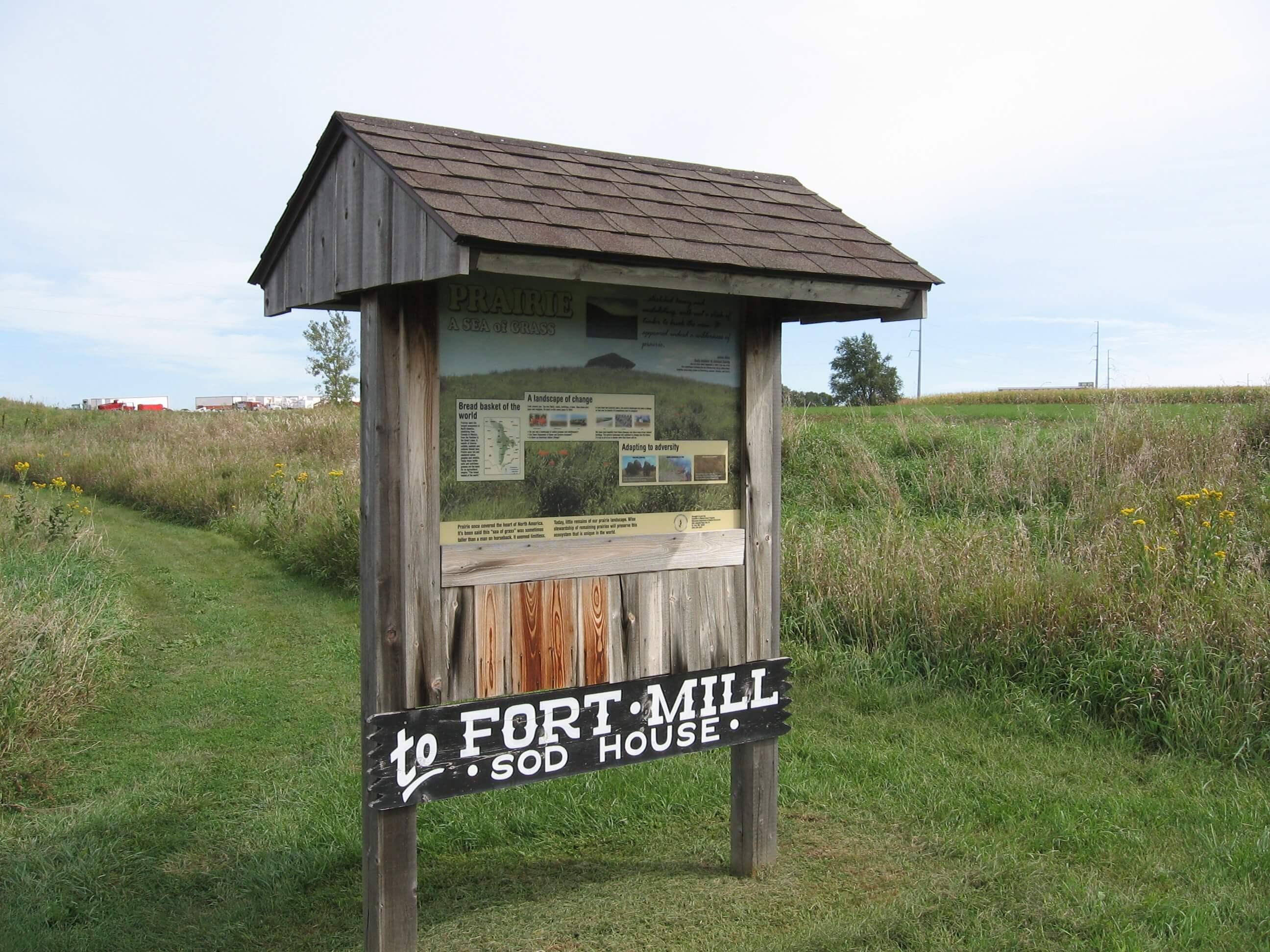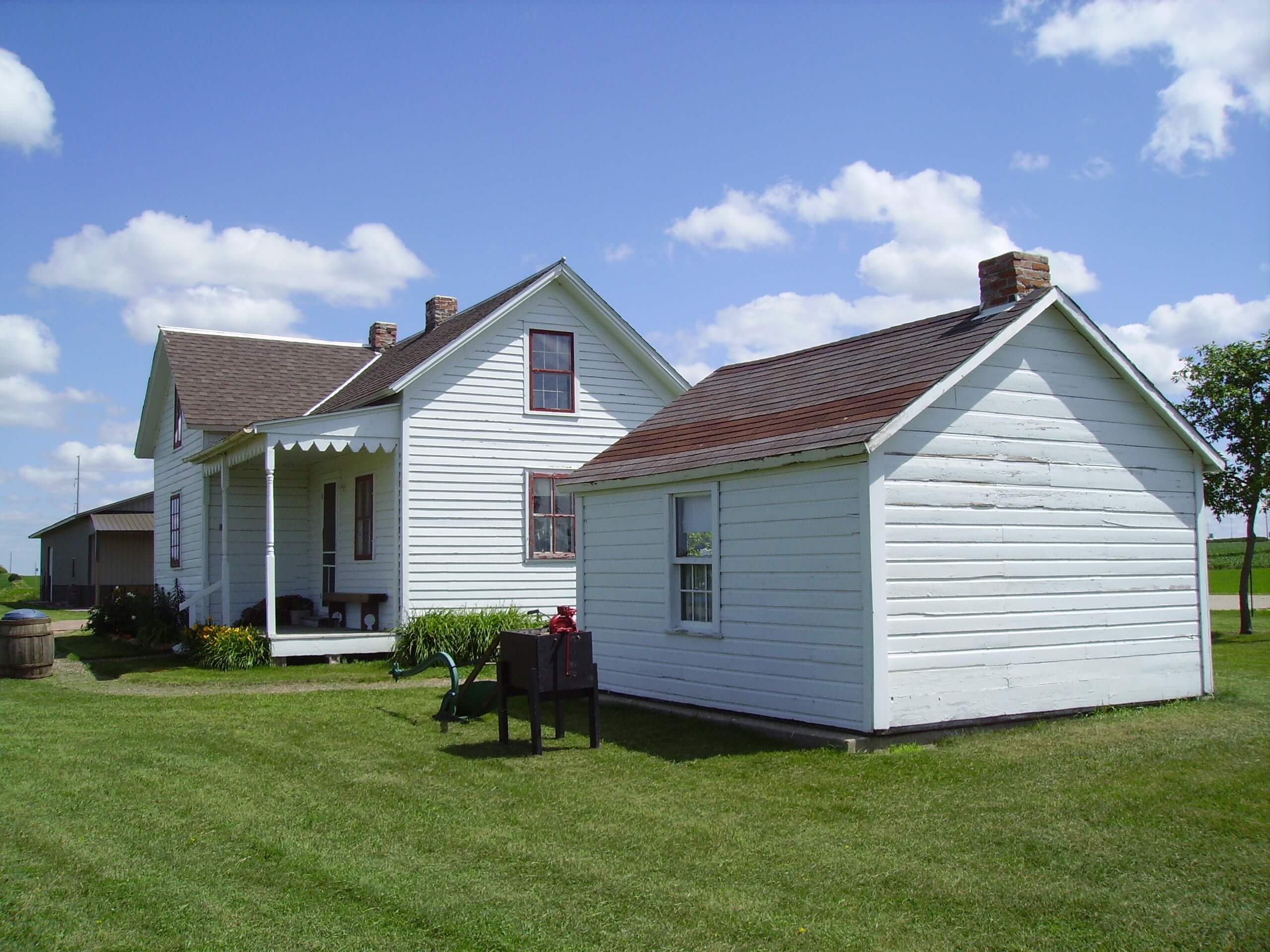
Echoes of the Prairie: Fort Belmont, Kansas’s Enduring Tribute to Pioneer Life
In the heart of Allen County, Kansas, where the vast prairie stretches toward the horizon, lies a place that defies the relentless march of time. Tucked away just outside the quiet town of Iola, Fort Belmont is not a relic of military might, nor a site of historical battle. Instead, it is a meticulously recreated 19th-century pioneer village, a living, breathing testament to the grit, ingenuity, and community spirit of those who first settled the American West. More than just a collection of old buildings, Fort Belmont is a journey back in time, offering visitors a tangible connection to the rugged yet hopeful lives led by Kansas’s early settlers.
From the moment one approaches the unassuming entrance, the modern world begins to recede. The gravel crunching underfoot, the scent of aged timber, and the quiet rustle of leaves replace the hum of traffic. Fort Belmont stands on sprawling grounds, a carefully curated landscape dotted with over two dozen authentic structures, each telling a story of perseverance and daily life on the frontier. It’s a place where history isn’t just read from a plaque; it’s felt in the rough-hewn logs of a cabin, heard in the imagined clang of a blacksmith’s hammer, and seen in the simple furnishings of a pioneer home.
A Step Back in Time: The Village Unveiled

Walking through Fort Belmont is akin to stepping onto a film set, yet the authenticity here is not for a camera, but for the visitor’s immersion. The layout is thoughtfully designed, mirroring the organic growth of a genuine frontier settlement. Each building serves as a window into a specific facet of 19th-century life, from the essential services to the social hubs.
The General Store is often the first stop, and fittingly so, as it was the beating heart of any pioneer community. Inside, shelves are stocked with an array of period-appropriate goods: bolts of calico, tins of coffee, barrels of flour, and an assortment of tools and trinkets. One can almost hear the bartering and gossip that would have filled the air, as settlers exchanged news and supplies. "It’s truly like stepping back in time," remarked Sarah Jenkins, a recent visitor from Wichita, her eyes wide with wonder. "You can almost hear the sounds of horses and children playing, the hum of daily life. It’s not just seeing history; it’s experiencing it."
Adjacent to the bustling store might be the quiet reverence of the Church. Its simple wooden pews and humble altar speak volumes about the central role faith played in the lives of early settlers, providing solace and community amidst hardship. The stained-glass windows, though perhaps not original to the specific period, add a touch of spiritual warmth to the otherwise stark interior.
The Schoolhouse is another poignant reminder of the pioneers’ commitment to their children’s future. With its tiny wooden desks, a slate blackboard, and a stern-looking teacher’s desk at the front, it evokes images of eager young minds grappling with their ABCs and arithmetic, often under the tutelage of a single, dedicated instructor. Education was a luxury, hard-won and highly valued.
Beyond these staples, the village unfolds to reveal a rich tapestry of frontier life. The Blacksmith Shop, with its forge and collection of tools, speaks to the crucial role of skilled tradesmen. Here, iron was hammered into horseshoes, tools, and wagon parts, essential for survival and progress. While the forge may not always be lit, the aura of industry and craftsmanship is palpable.
Several Log Cabins dot the landscape, each furnished to represent different stages of pioneer life, from the sparse dwelling of a new arrival to the slightly more comfortable abode of an established family. These structures offer a stark glimpse into the realities of frontier living: small spaces, simple beds, basic cooking implements, and the ever-present challenge of warmth and sustenance. The hand-hewn logs, often sourced locally, underscore the sheer labor involved in building a life from scratch.
Other notable structures include a functional Sawmill, demonstrating how raw timber was transformed into building materials; a Jailhouse, a stark, small building with barred windows, a reminder that even on the frontier, law and order, however rudimentary, were necessary; and various outbuildings like barns and sheds, hinting at the agricultural backbone of the community. A particularly interesting feature is often a replica of an Old Bank, suggesting the emergence of commerce and a more formalized economy.
The Genesis of a Vision: A Community’s Dream

What makes Fort Belmont truly remarkable is that it is not a preserved historic site, but a painstakingly constructed replica, born from the vision and dedication of local volunteers. Unlike military forts with defined historical timelines and official government records, Fort Belmont represents the collective memory and historical imagination of a community eager to preserve its heritage.
The project began as a grassroots effort, likely in the latter half of the 20th century, fueled by a desire to educate future generations about the struggles and triumphs of their ancestors. Local residents, historians, and enthusiasts pooled their resources, time, and expertise. Many of the buildings were either moved from their original locations across Kansas and painstakingly restored, or meticulously recreated using authentic techniques and materials, often donated by local landowners or salvaged from older structures.
"Our goal is to keep this history alive for future generations," says Martha Thompson, a long-time volunteer and unofficial historian for Fort Belmont, her voice filled with quiet passion. "It’s about understanding where we came from, the challenges our ancestors faced, and the incredible resilience they showed. We want kids to see, touch, and feel this history, not just read about it in a textbook." This sentiment underscores the philosophy behind Fort Belmont: hands-on, immersive learning.
The dedication required to bring such a vision to life is immense. Volunteers spent countless hours felling trees, hewing logs, learning traditional building techniques, and meticulously furnishing each structure. Every detail, from the cast-iron stove in a cabin to the antique tools in the blacksmith shop, has been carefully selected to ensure historical accuracy. It’s a testament to the power of community collaboration and a shared love for local history.
Kansas and the Frontier: A Broader Context
Fort Belmont, while a specific local creation, resonates with the broader narrative of Kansas’s pivotal role in American westward expansion. Kansas, admitted to the Union in 1861, was a frontier state, a crucial stopping point on routes like the Santa Fe Trail and the Oregon Trail. It witnessed the struggles of homesteaders, the conflicts of "Bleeding Kansas," and the eventual taming of the prairie.
The settlers depicted in Fort Belmont’s village embody the spirit of the Homestead Act of 1862, which offered 160 acres of free land to those willing to cultivate it for five years. These were individuals and families seeking new opportunities, escaping poverty or persecution, or simply driven by an adventurous spirit. They faced immense challenges: harsh weather, isolation, unpredictable native encounters, and the sheer physical labor of transforming wild prairie into productive farmland.
Fort Belmont eloquently captures the essence of this period – the self-sufficiency, the reliance on neighbors, the importance of communal institutions like the church and school, and the constant struggle against the elements. It serves as a microcosm of the larger story of settlement and nation-building that unfolded across the American West.
Beyond the Buildings: Education and Community Hub
Fort Belmont is far more than a static museum; it is a dynamic educational facility and a vibrant community hub. Throughout the year, it hosts various events that bring the past to life. Heritage festivals often feature historical reenactments, craft demonstrations (like spinning, weaving, candle-making, or blacksmithing), and live music, allowing visitors to experience the sights, sounds, and even tastes of the 19th century.
School groups are regular visitors, finding in Fort Belmont an unparalleled "classroom without walls." Children can churn butter, try their hand at writing on a slate, or learn about pioneer games. This hands-on engagement fosters a deeper understanding and appreciation for history than any textbook alone could provide. The fort’s volunteers, many of whom are deeply knowledgeable about pioneer life, serve as invaluable guides, sharing anecdotes and insights that make history come alive.
Moreover, Fort Belmont is a source of immense local pride for Iola and Allen County. It draws tourists from across the region and beyond, contributing to the local economy and putting this corner of Southeast Kansas on the map for history enthusiasts. It’s a place where families can spend a day together, learning and creating lasting memories.
The Enduring Legacy
In an age of rapid technological advancement and instant gratification, Fort Belmont stands as a quiet but powerful reminder of simpler, harder times. It underscores the values of hard work, community, resilience, and ingenuity – qualities that remain relevant today. It invites contemplation on how much has changed, and how much, in terms of human spirit, has remained the same.
Maintaining such a complex site is no small feat. It relies heavily on continued volunteer efforts, donations, and the support of the community. The structures require constant upkeep, and the historical accuracy demands ongoing research and dedication. Yet, the people behind Fort Belmont remain steadfast in their mission.
For anyone seeking a tangible connection to America’s past, a place where the echoes of the prairie still whisper stories of courage and perseverance, Fort Belmont offers an unforgettable journey. It is a testament not just to the pioneers it honors, but to the enduring spirit of community that continues to build and preserve history, one log cabin, one schoolhouse, and one shared memory at a time. In the heart of Kansas, Fort Belmont ensures that the legacy of the frontier remains vibrantly alive, inviting all who visit to step back, reflect, and appreciate the foundations upon which our present was built.


